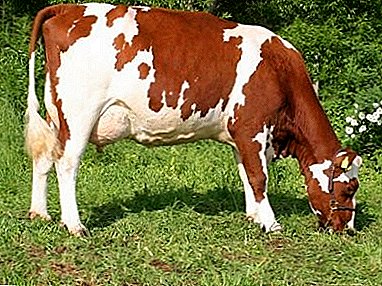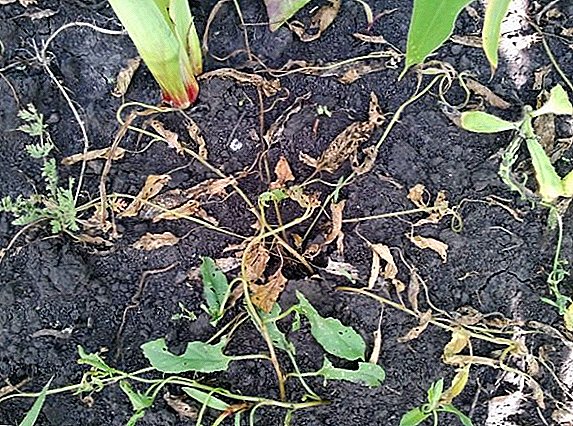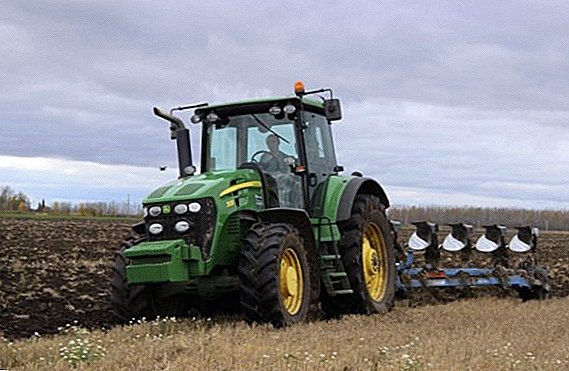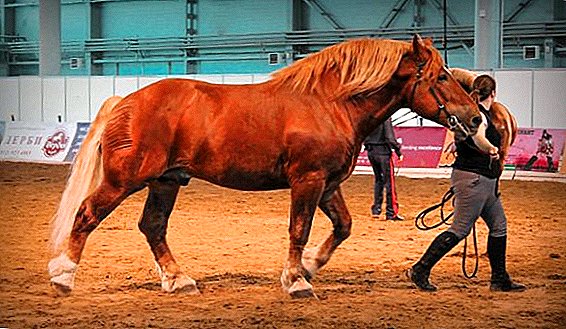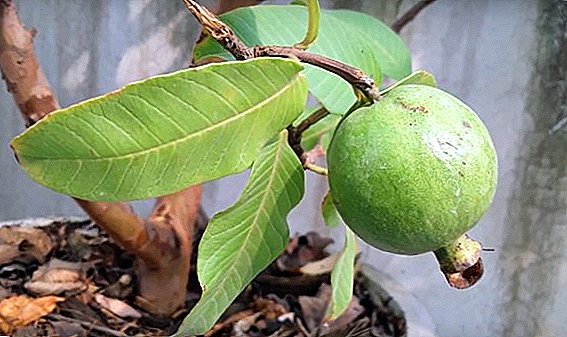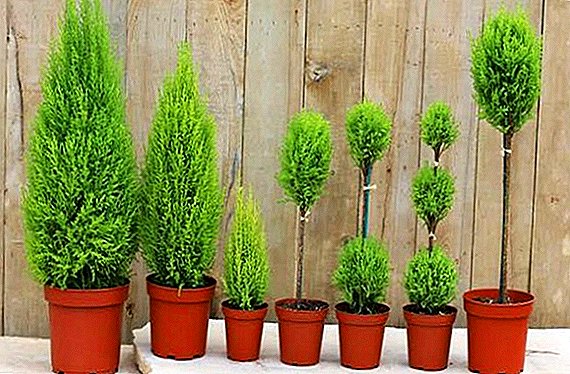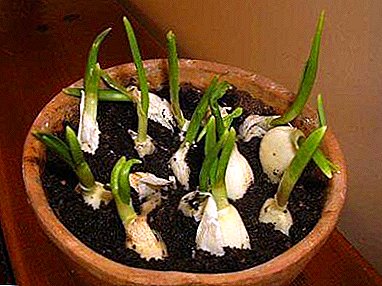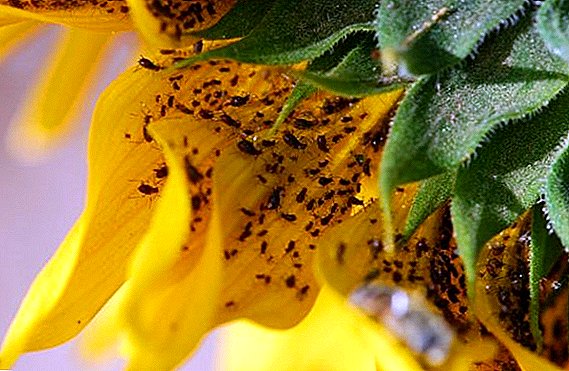 Sunflower is an annual high and quite powerful plant. The root of the flower goes several meters deep into the soil. From the main root sprout about a meter to the sides of the side roots. The stem of a sunflower is strong and thick, with a loose core. On one plant there are from 15 to 35 leaves, rough and pointed. At the top of the stem is a large inflorescence surrounded by green leaves.
Sunflower is an annual high and quite powerful plant. The root of the flower goes several meters deep into the soil. From the main root sprout about a meter to the sides of the side roots. The stem of a sunflower is strong and thick, with a loose core. On one plant there are from 15 to 35 leaves, rough and pointed. At the top of the stem is a large inflorescence surrounded by green leaves.
Outside inflorescences are sterile flowers. In addition, the sunflower has flowers of both sexes of orange or yellow color. The fruits of sunflower are seeds with a core inside. Depending on the type of plant, the rind of the fruit has its own color: from white to black.
Did you know? Sunflower loves countries with a warm climate, as well as fertile soil and a sunny place. Not surprisingly, his homeland is Mexico. From this country, the plant was imported to Russia and Ukraine.Sunflower, unfortunately, has many enemies. In this article we will describe what pests and diseases are in sunflower and how to deal with them.
What is dangerous for sunflower meadow moth
A meadow moth on a sunflower is critically dangerous in a period of increasing its population, which occurs cyclically - once in 10-12 years. The pest reduces the yield by up to 60%, and in some cases can cause a 100% loss of plantings. The highest threshold of harm - ten individuals per 1 square meter.
In order to protect the sunflower from the meadow moth, deep plowing, tillage between rows, loosening with hilling, treatment with preparations during the development of caterpillars, as well as effective chemical preparations - bitoksibibalin and lepidotsid are required. 
Fighting Sunflower Shponoskoy
Sunflower shponoska - small insect 4-5 cm in length. The beetle itself is black, covered with gray hairs. On the abdomen it has a long spike, and the antennae look like strings. Short wings do not completely cover the abdomen. The legs are reddish-yellow, and the head is always down.
Female shaponosok lay eggs in the sinuses of the leaves. Then yellow larvae appear from them with a brown head and three pairs of legs covered with long hairs. The larvae infect the plant, penetrating into the very core, and make long strokes there. Usually they eat the first third of the stem, starting from the bottom. In the fall, the larvae turn into pupae and hibernate.
Effective measures to combat shpononkoy: deep plowing, timely cleaning, processing with a vantex, given by a stable or fufanon. 
How to protect the plant from sunflower moth
It is almost impossible to fully protect your planting from this dangerous pest. The least susceptible to it are sunflower hybrids of armor varieties. Their seeds are distinguished by a durable inner shell, which the caterpillars cannot gnaw through. This shell is formed a week after the start of flowering. As a result, the pests eat only the leaves, and the grains remain intact. 
Important! ForI have to reduce the number of any pests need to do weeding.
Cotton scoop
Cotton scoop - one of the main pests of sunflower, which is especially common in southern Ukraine. This is a butterfly with a wingspan of 30-40 mm. Its front wings have gray and yellow shades, and the rear wings are light with a burgundy stripe and a dark spot in the middle. The caterpillar of the cotton hill reaches 35-40 mm in length. Her body is covered with small spines. Color - from light green and yellow to brown. The pupa is reddish-brown in color, has 15-20 mm in length. Overwinters in the soil.
To overcome the cotton shovel, it is necessary to destroy the weeds in time, to produce deep autumn plowing, to cultivate the soil between the rows 6-8 cm in depth.

Sunflower barbel
This beetle reaches a length of 20 mm, its body is covered with yellow hairs. Barrel larvae are pale yellow, without legs. Females lay eggs inside the stem of the sunflower. To do this, they gnaw the skin to form a pad with a diameter of 5-8 mm with a deep gap in the middle. One female lays up to 50 eggs.
Sunflower pest control will be effective if you:
- sow the plant early;
- after harvesting, cut the stems as close to the ground as possible;
- remove the tops from the field;
- time to get rid of weeds.

How to deal with aphids on a sunflower
Most aphids love to nibble at the sunflower during a period of prolonged drought and high air temperatures. But most of the insects are eaten by ladybugs. For this reason, aphids can not cause much harm, and processing plants with chemicals is not required.
Did you know? For us, such a small insect as aphid seems to be one family, but in fact scientists have about 4,000 species of aphid.In rare cases, aphids are quite numerous, aggressive and can seriously harm landings. The danger of an insect is that after its attack on the sunflower, the buds of the plant are not revealed. As a result, a good harvest will not be. In this case, treatment with chemicals is a must.

Measures to struggle with clickers
- Many larvae of the nutcracker die during the mechanical processing of the soil. It is best to carry out such a procedure before the insects penetrate deep into the soil.
- Time to weed, especially wheat grass.
- Acidic soils need to be chilled, it has a detrimental effect on the larvae of the pest.

What are dangerous sables (darkling) for sunflower
The darkling larvae are very similar to clickers, but have a few differences:
- in the larvae of the coppers, the front pair of legs is larger than the rest;
- their head is bulging;
- markedly developed upper lip.
The most popular measures to combat slow-moving steppe: tillage, deep plowing, cultivation of fields. We still need to weed in time, especially wheat grass. Observe the seeding rate, fertilize and feed the plants to enhance their initial growth. Before sowing, it is necessary to treat the seeds with insecticides. 
Cornfish
Cornfish is an oval beetle with a bluish tinge, 7-9 mm long. It has elytra of the same width. Pests overwinter in the surface layer of soil and under various shelters. Insects live for 2-3 years, and the larvae develop from 12 to 14 months. Pests begin to surface in the middle of spring. Females lay up to 500 eggs in the first layer of soil during the growing season. 
Black beet weevil
Beet weevil is a black beetle of rather large size. This pest has no wings, and the head is flat and small with a long proboscis. The abdomen is covered with hairs and black dots.
Sunflower protection from pests:
- apply organic and mineral fertilizers to the soil;
- regularly remove weeds;
- loosen the soil;
- process seedlings with effective preparations;
- after harvesting it is good to loosen the soil.

Sunflower bugs
These pests cause problems by sucking juices from different parts of the plant. The most dangerous is the defeat of the seed. Further their necrosis occurs. Also, pests negatively affect the sown and marketable quality of seeds. The maximum allowable number of pests is 10 insects per plant.  To fight a meadow bug, you need time to destroy weeds and plant debris. If there are a lot of pests, spray the sunflower with Kemifos and Karbofos-500.
To fight a meadow bug, you need time to destroy weeds and plant debris. If there are a lot of pests, spray the sunflower with Kemifos and Karbofos-500.


